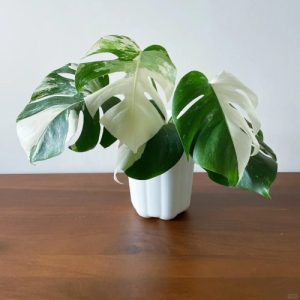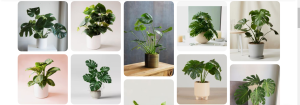- English
- Chinese
- French
- German
- Portuguese
- Spanish
- Russian
- Japanese
- Korean
- Arabic
- Irish
- Greek
- Turkish
- Italian
- Danish
- Romanian
- Indonesian
- Czech
- Afrikaans
- Swedish
- Polish
- Basque
- Catalan
- Esperanto
- Hindi
- Lao
- Albanian
- Amharic
- Armenian
- Azerbaijani
- Belarusian
- Bengali
- Bosnian
- Bulgarian
- Cebuano
- Chichewa
- Corsican
- Dutch
- Estonian
- Filipino
- Finnish
- Frisian
- Galician
- Georgian
- Gujarati
- Haitian
- Hausa
- Hawaiian
- Hebrew
- Hmong
- Hungarian
- Icelandic
- Igbo
- Javanese
- Kannada
- Kazakh
- Khmer
- Kurdish
- Kyrgyz
- Latin
- Latvian
- Lithuanian
- Luxembou..
- Macedonian
- Malagasy
- Malay
- Malayalam
- Maltese
- Maori
- Marathi
- Mongolian
- Burmese
- Nepali
- Norwegian
- Pashto
- Persian
- Punjabi
- Serbian
- Sesotho
- Sinhala
- Slovak
- Slovenian
- Somali
- Samoan
- Scots Gaelic
- Shona
- Sindhi
- Sundanese
- Swahili
- Tajik
- Tamil
- Telugu
- Thai
- Ukrainian
- Urdu
- Uzbek
- Vietnamese
- Welsh
- Xhosa
- Yiddish
- Yoruba
- Zulu
- Kinyarwanda
- Tatar
- Oriya
- Turkmen
- Uyghur

Često poznata kao "švicarska tvornica sira",Monstera Siltepecana je šarmantna ukrasna biljka. Mnogi ljubitelji biljaka su ga obožavali zbog upečatljivih listova poroznosti i snažnih razvojnih kapaciteta. Ne samo estetski lijepa, već i ova biljka obitelji Araceae - od džungla Srednje i Južne Amerike - ne daje neki prirodni element do unutarnjeg prostora. Svaki ljubitelj biljaka pita se kako najbolje držati Monstera u zatvorenoj atmosferi kako bi mogao procvjetati.

Čudovište
Osnovna ponašanja i osobine Monstere
Jedna takva biljka penjačica je Monstera. Rastući prema gore kako bi dobio sunčevu svjetlost, pričvršćuje se za drveće koristeći zračno korijenje u prirodnom okruženju. Pod odgovarajućim svjetlom i vlagom, ova biljka može pokazati veliku snagu. Iako Monstera obično ne cvjeta niti razvija plod unutra, njezin neobičan oblik lišća i gusta tekstura čine je savršenim naglaskom za bilo koji dizajn interijera. Razumijevanje obrasca razvoja Monstere može nam pomoći da stvorimo prikladnije stanište za biljku, jamčeći njezinu snagu i zdravlje.
Monstera ima nekoliko potreba za okolišnim elementima poput tla, vlage, temperature i svjetla. Monstera se može činiti da treba osjetljivu skrb na novajlije, ali u stvarnosti je jednostavno možete održavati u izvrsnom rastućem stanju sve dok savladate neke osnovne ideje za njegu.
Monsterina rasvjeta zahtijeva
Među mnogim elementima koji utječu na razvoj Monstere je svjetlost. Monstera uspijeva na neizravnom srednjem do jakom svjetlu. Iako može preživjeti pri slabom svjetlu, stopa rasta Monstere bit će znatno usporena, a razvoj pora na lišću također će biti otežan u slučajevima dugotrajnog nedostatka dovoljno svjetla. Monsteru treba smjestiti uz istočni ili zapadni prozor ili na južni prozor s dovoljno difuzne svjetlosti kako bi se osigurao njezin zdrav razvoj. Monstera se može držati vani ljeti, ali treba je držati podalje od izravne sunčeve svjetlosti kako bi se izbjegle opekline lišća.
Nedostatak svjetla može biti indiciran ako otkrijete da lišće Monstere počinje gubiti sjaj ili žuti. Kako biste bili sigurni da je biljka pod odgovarajućim svjetlosnim uvjetima, u ovom trenutku možete koristiti svjetlomjer za mjerenje intenziteta svjetlosti. Nadalje, primjena svjetla za razvoj biljaka mudra je odluka u godišnjim dobima ili na mjestima s malo svjetla, što može pomoći Monsteri da raste u zdravlju.
Pametna kontrola vlage i zalijevanje
Obično se savjetuje zalijevanje jednom svaka 1-2 tjedna, Monsterina dinamična potreba za vodom omogućuje da se tlo donekle osuši između dva zalijevanja. Uz dovoljno svjetla, Monstera ima više potrebe za vodom, stoga treba povećati učestalost zalijevanja. Što se tiče nedovoljne svjetlosti, navodnjavanje treba prikladno smanjiti kako bi se spriječilo previše vode i oštećenje korijena.
Monstera će se aktivnije izvoditi u okruženju s višom vlagom, posebno kada se vlaga drži između 40% i 60%, čak i ako može dobro rasti na standardnoj vlažnosti iznutra. Ako zrak u vašoj kući bude prilično suh, možda biste htjeli razmisliti o korištenju ovlaživača za podizanje vlage, čime se promiče zdrav razvoj Monstere. Nadalje, izbjegavanje zagađivača u vodi od oštećenja biljke koristi filtriranu vodu ili vodu koja je emitirana.
Odgovarajućim temperaturama
Među mnogim elementima koji utječu na razvoj Monstere je temperatura. Monstera može rasti između 18°C i 30°C, stoga je idealna temperatura između 65°F i 85°F. Temperature ispod 15°C mogu zaustaviti ili uzrokovati oštećenje Monstere smrzavanjem, što utječe na njen razvoj. Monsteru bi stoga zimi trebalo premjestiti u toplu prostoriju, osobito kada temperatura padne ispod 60°F (približno 15°C), kako bi se izbjeglo negativno djelovanje hladnoće na nju.
Stopa rasta Monstere znatno će se usporiti u okruženju niske temperature, a lišće također može požutjeti ili otpasti. Monsteru stoga treba izbjegavati u područjima sa značajnim temperaturnim varijacijama, poput prozorskih dasaka ili ulaza, zimi ili tijekom hladnih večeri. Pravilna regulacija unutarnje temperature pomoći će Monsteri da održi snažan rast čak i zimi.
Prijedlozi za preusmjeravanje Monstere i izbora tla
Monstera ima velike potrebe za tlom. Dobra drenaža i propusnost zraka, kao i dovoljno organske tvari trebali bi definirati savršeno tlo. Obično se savjetuje da koristite dobro dreniranu mješavinu za posuđe, perlit ili vulkansko kamenje mogu se dodati u razumnim količinama kako bi se povećala sposobnost prozračivanja i drenaže tla. Monstera ima dobro razvijen korijenski sustav, stoga pri odabiru posude treba voditi računa o tome da ima dovoljno prostora za prirodno širenje korijena.
Korijenje Monstere postupno će zauzimati posudu kako se bude razvijalo, isprepleteno ili izloženo u drenažnim rupama. Presađivanje je trenutno bitno. Obično se presađivanje vrši svake jedne do dvije godine kako bi se zajamčila odgovarajuća opskrba hranjivim tvarima i razvojno područje za Monsteru. Proljeće je idealno vrijeme za presađivanje jer je Monstera na vrhuncu razvoja i može se bolje uklopiti u novo okruženje. Kako biste osigurali dovoljno prostora za razvoj, savjetuje se odabrati novu posudu za presađivanje koja je jedan do dva inča veća od izvorne.
Obrezivanje i oplodnju pomažu Monstera da jači
Tijekom vegetacijske sezone - prskanja i ljeta - Monstera ima više prehrambenih potreba; Česta oplodnja pomaže potaknuti njegov razvoj. Obično se savjetuje da naneseno uravnoteženo gnojivo topljivo u vodi svaka dva tjedna na mjesečno, oplodnja se može obaviti istovremeno s zalijevanjem kako bi se zajamčilo da gnojivo prodire jednako u zemlju. Gnojidbu treba smanjiti ili ukinuti u jesen i zimu kada se brzina rasta Monstera usporava kako bi se spriječilo oštećenje gnojiva koji proizlaze iz previše hranjivih sastojaka. Možete rastegnuti razdoblje oplodnje na odgovarajući način ako koristite svjetla za rast biljaka za održavanje Monstera koja raste tijekom cijele godine.
Održavanje Monstere ljupko uglavnom ovisi o obrezivanju. Iako redovito čišćenje žutih lišća i prenapučenih stabljika pomaže Monsteri da ostane u dobroj fazi razvoja, ne zahtijeva češće obrezivanje. Kako bi se spriječilo bakterijsku infekciju koja je posljedica prljavih instrumenata, savjetuje se da koristi oštre, čiste škare za obrezivanje, dok bi obrezivanje obrezivanja trebalo obaviti u proljeće ili ljeto ako je njegov cilj potaknuti novi razvoj jer je Monstera u sezoni vrhunskog rasta u ovom trenutku i novi pupoljci nakon što je obrezivanje mogao biti brzo izjednačen.
Metode širenja Monstere
Reznice omogućuju širenje Monstere. Provjerite postoje li zračni korijeni i lišće na odabranim zdravim granama tako što ćete ih sjeći ispod čvorova. Izbjegavajte izravnu sunčevu svjetlost stavljanjem reznica u vodu ili mokro tlo u toplo i svijetlo okruženje. Dok je uzgojena tla potreba za stalnom vlagom dok se reznice korijene, hidroponski uzgojena voda mora se osvježiti svaki tjedan kako bi se održala njegova čistoća. Reznice se mogu premjestiti u svježi spremnik i nositi redovitu njegu nakon što se korijenski sustav razvija.
Tipične probleme i fiksacije Monstera
Iako je Monstera zaista postrojenje za održavanje, još uvijek postoje neki tipični problemi na koje biste mogli naići na brigu. Slijedi neki vjerojatni simptomi i savjeti o njihovom rukovanju:
Obično odsutnost vode ili izuzetno suho okruženje uzrokuje smeđe i krhke rubove lišća. Češće vode; Također, ispravno povećajte atmosfersku vlagu.
Biljne se isušice ili lonac se isušuju: to bi moglo biti rezultat ili neadekvatnog prostora za posuđe ili produženog nedostatka vode. Voda odmah; Razmislite o tome da se reprevite kako biste osigurali dodatnu sobu za rast.
Listovi žuti ili stabljike crne: ovo bi moglo biti pretežno voditi truljenje korijena. Rjeđe voda; Nadalje, pratite odvodnju tla.
Ako listovi monstere nemaju karakteristične pore, ili biljka još nije zrela ili su svjetlo ili vlažnost neadekvatni. Monstera će razviti lijepo lišće uz dovoljno svjetla, umjerenu vlažnost i odgovarajuću potporu.
Monsterin prepoznatljiv oblik lišća i jednostavna njega su ono što me privlači.

Monstera tajlandska zviježđa
Ne samo da je Čudovište Odličan ukras za mjesto, ali s dovoljno pažnje može pokazati snažan život. Monstera će procvjetati u vašoj kući i pretvoriti se u zelenu scenu sve dok dobro poznajete njegovu temeljnu njegu. Monstera će nastaviti rasti na području s prikladnom svjetlošću, umjerenom vlagom i stalnom temperaturom, pružajući vam živo životno okruženje i bezbroj prirodnih ljepota.
Prethodne vijesti
Savjeti za održavanje zdravlja Dracaena Arborea u...Sljedeće vijesti
Metode širenja Aphelandra Dania


